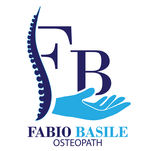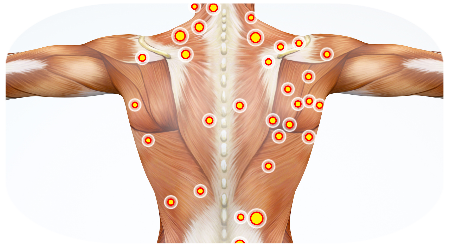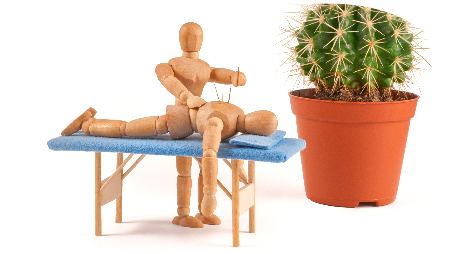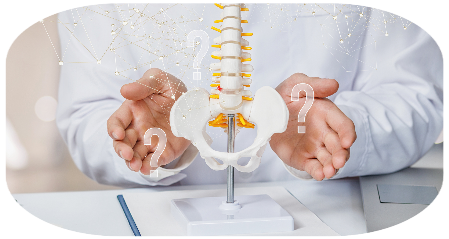DryNeedling
What it is
Dry Needling (DN, also known as intramuscular manual stimulation, or intramuscular needling) is a treatment technique that treats pain of myofascial trigger point (click to download the article). Myofascial trigger point pain is defined as “pain arising from one or more myofascial trigger points (MTrPs), which are hyperirritable spots in skeletal muscle that are associated with hypersensitive palpable nodules in taut bands”. This can be confirmed by “snapping” the trigger point similar to how one would pluck a violin string . It has been estimated that myofascial pain is responsible for 30-85% of patients who present to a primary care setting or pain clinic with a complaint of pain.
Dry Needling VS Acupuncture
To some, trigger point dry needling (DN) may appear synonymous with Traditional Chinese Acupuncture (TCA); nonetheless, the two are uniquely different. TCA is based on the theory that the workings of the human body are controlled by a vital force or energy called “Qi” (pronounced “chee”), which circulates between organs along channels called meridians. These meridians are networks inside the body with acupoints (high density sites of sensitive receptors near neurovascular structures and/or lymphatic vessels) on the skin and deeper tissues. Thus, acupoints are different from myofascial trigger points.
Mechanism of Dry Needling
DN technique is commonly broken down into three typical models: a radicular model, a spinal segmental sensitization model and, most frequently utilised, a trigger point model.
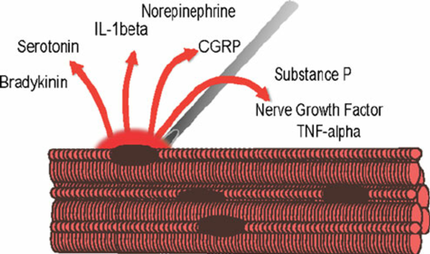 Dry needling of the MTrPs works on mechanical and biochemical responses, such as normalizing muscle tone and improving/correcting the flow of different substances (e.g. acetylcholinesterase, bradykinin, calcitonin gene-related peptide, and substance P) in the affected muscle. According to the applied technique (see Treatment), a localized twitch response commonly evoked with dry needling may induce an analgesic effect. Advocates of the trigger point model believe that treatment of the MTrPs should only be one facet of a patients plan of care: stretching, joint mobilizations, neuromuscular reeducation, strengthening, and other related interventions should still be employed.
Dry needling of the MTrPs works on mechanical and biochemical responses, such as normalizing muscle tone and improving/correcting the flow of different substances (e.g. acetylcholinesterase, bradykinin, calcitonin gene-related peptide, and substance P) in the affected muscle. According to the applied technique (see Treatment), a localized twitch response commonly evoked with dry needling may induce an analgesic effect. Advocates of the trigger point model believe that treatment of the MTrPs should only be one facet of a patients plan of care: stretching, joint mobilizations, neuromuscular reeducation, strengthening, and other related interventions should still be employed.When it's used
Dry Needling is mainly used for MYOFASCIAL TRIGGER POINT PAIN, such as a muscle knot, related to posture, injuries, tightness, stiffness, etc.
Patients may come for:
- MYOFASCIAL PAIN
- MUSCLE PAIN
- MUSCLE KNOT
- MUSCLE TIGHTNESS
- SPORT-RELATED PAIN
- JOINT STIFFNESS
- Etc...
Treatment
DN treatment is part of the manual therapy session, such as Osteopathy or Physiotherapy. The patient is positioned in a relaxed posture suitable to expose the muscles being treated. Positions may include supine, prone, or sidelying, and pillows and bolsters may be utilized to help with patient positioning.
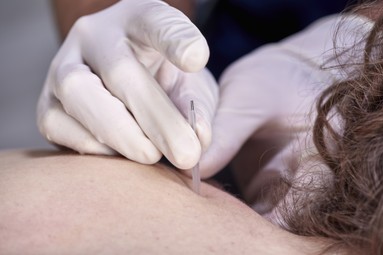 Once the needle has penetrated the skin and is inserted into the muscle, techniques vary: the practitioner may utilize a slow, steady, lancing or pistoning motion in and out of the muscle (termed dynamic needling), he or she may leave the needle in situ (termed static needling), or the needle may be rotated several revolutions in order to draw the soft tissues. Needles are left in place for a maximum of 10 minutes. Please note that these are simply guidelines, and not standards; choosing the gauge and length of needles should be left to the discretion of the treating practitioner.
Once the needle has penetrated the skin and is inserted into the muscle, techniques vary: the practitioner may utilize a slow, steady, lancing or pistoning motion in and out of the muscle (termed dynamic needling), he or she may leave the needle in situ (termed static needling), or the needle may be rotated several revolutions in order to draw the soft tissues. Needles are left in place for a maximum of 10 minutes. Please note that these are simply guidelines, and not standards; choosing the gauge and length of needles should be left to the discretion of the treating practitioner.F.A.Q.
Is it safe?
The practice is very safe, especially as the therapist must undergo intense training to become certified in the practice of dry needling, and will already have vast knowledge of the anatomy of the body to know where to insert the needles.
Is it painful?
Your first session will normally be quite gentle, to familiarize with DN and avoid any painful experience. However, according to the location, the type of needle and technique, dry needling can sometimes be painful for few seconds. No pain should be expected after the session but, in case of soreness, do not panic: it is similar to the one you could sometimes experiences after a manual treatment, and it normally lasts for a few hours.
